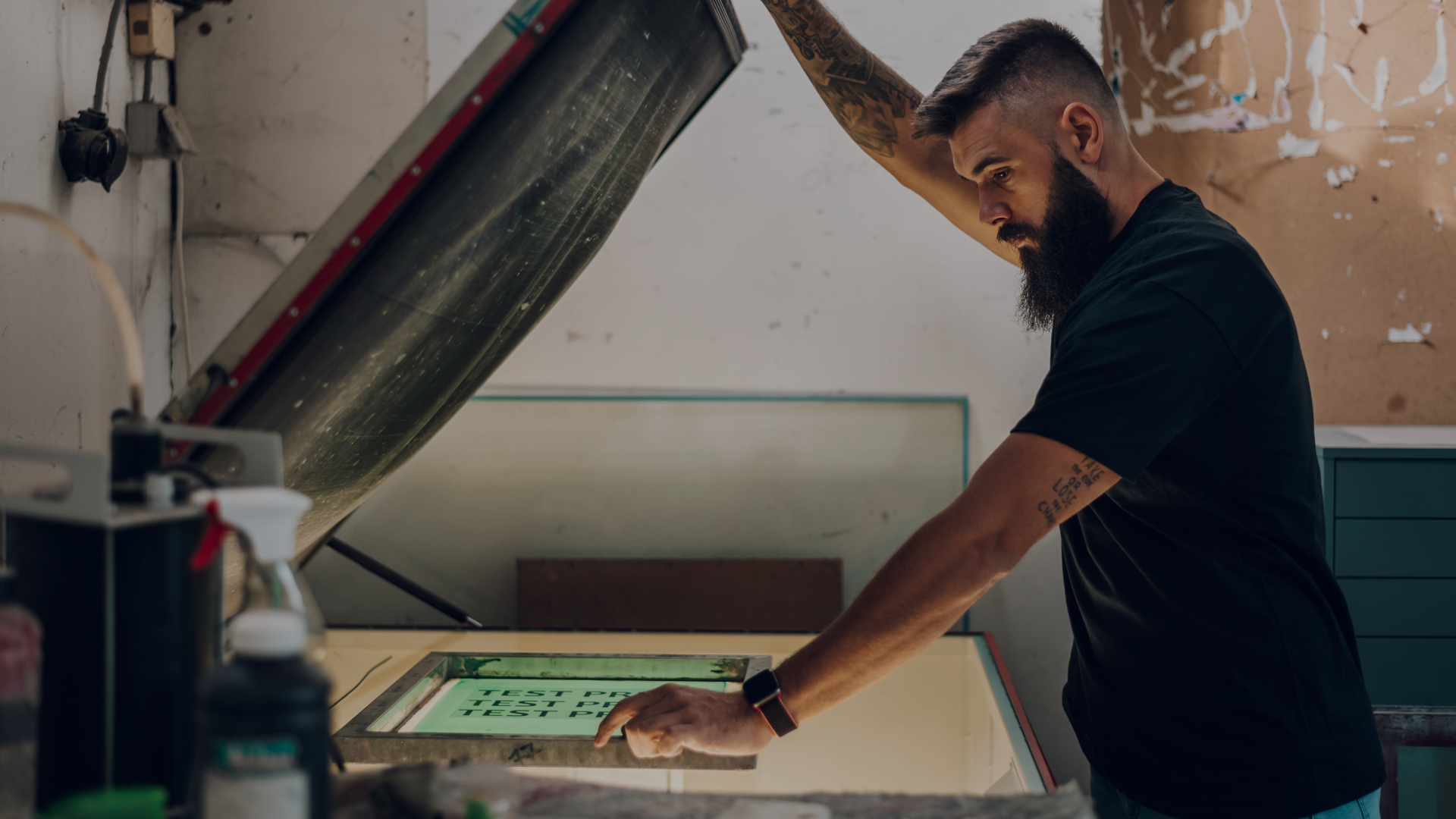Your Cart is Empty
Looking for m&R Parts? We have hundreds of parts in stock & ready to ship!
Looking for m&R Parts? We have hundreds of parts in stock & ready to ship!
Looking for m&R Parts? We have hundreds of parts in stock & ready to ship!

The exposure process in screen printing is notably a delicate, important, and at times tedious process. It can be easy to overexpose or underexpose your screen, forcing you to restart from the beginning. Currently the two most common methods are traditional film positives (the legacy method) and CTS (Computer-to-Screen) Imaging. Film positives have been the standard way to transfer artwork to a screen for multiple decades and are still readily used to this day. CTS imaging, on the other hand, is a digital process that allows the artwork to directly be imaged onto the screen without film. What we want to know is: what are screen printers going with in 2025? Let’s look further as to which technology is preferred and why.
The traditional exposure process transforms digital artwork into physical stencils through a multi-step process of prep, exposure, and development.
Film Positive exposure units are considerably cheaper than CTS imaging systems, making them the go-to for almost every startup shop. They’re cost-effective for small volume jobs, and don’t bring the learning curve that comes with digital systems.
For every set of advantages there will be some concessions, and the traditional method is no different. The most obvious disadvantage would be the need for restocking consumables. However, we shouldn’t overlook the labor requirements, extra storage requirements, or registration inconsistencies that can all make the gap in cost between the two technologies look less outrageous.
Computer-to-screen (CTS) imaging takes a fundamentally different approach by utilizing digital technology to eliminate the film intermediary. Instead of printing onto film, the CTS system directly applies light-blocking material exactly where it's needed on the screen.
CTS imaging comes with its own set of advantages from eliminating the need for consumables, to superior registration accuracy, and faster turnaround times among others. The process is inherently quicker, easier, and provides consistent opacity. With less need for manual labor, the potential for minor errors slowing up the overall job decreases.
However, these benefits do come with trade-offs. CTS systems need a bigger up-front investment, costing roughly 3x more than traditional exposure units (~$15,000). Incorporating this technology also introduces a steeper learning curve for operators and creates a dependency on digital systems, making equipment downtime a production risk that shops must plan for. Because of this, you will see most high-end shops have a hybrid setup of both types.
As it stands currently, traditional film exposure is still vastly the go-to option for most shops because of its low barrier to entry. But there has been a shift recently, as more and more companies are investing in CTS imaging systems. Reducing manual labor is always a plus, and the quality-of-life advantages CTS imaging gives you becomes almost necessary as your operation grows. It is estimated that over 50% of medium-to-large sized shops will have adopted CTS imaging by 2027, if they aren’t there already.
There will also be more advancements in CTS technology, making it a more robust option. Kiwo’s LX series, for example, no longer requires inkjet heads to spray imaging material. Instead, it exposes the emulsion using light from lasers, giving it the capability to capture at 1270 DPI and up to 2540 DPI resolutions. Considering that most imaging systems only yield 300-700 DPI, this represents to us an evolution of imaging technology and a glimpse of what is to come
Ultimately, the decision you end up making with your exposure process has to be the decision best for your unique set of conditions and projected growth. From budgeting to space constraints, everything matters. Traditional film positives are still the most practical choice for startups, even though the technology of CTS is evolving. When considering reducing downtime or getting around difficulties associated with manual labor, CTS will give you that extra functionality that positions it as a necessity and not a luxury for your shop.
At SPR, we understand different situations have different applicable solutions and we are here to help you find what your best solution is. Having access to quality equipment and supplies is pivotal, and we strive to provide you with the best option, whichever route you choose. SPR is the partner in your corner for both equipment and supplies – we’ll help you get what makes sense for you now & in the future.